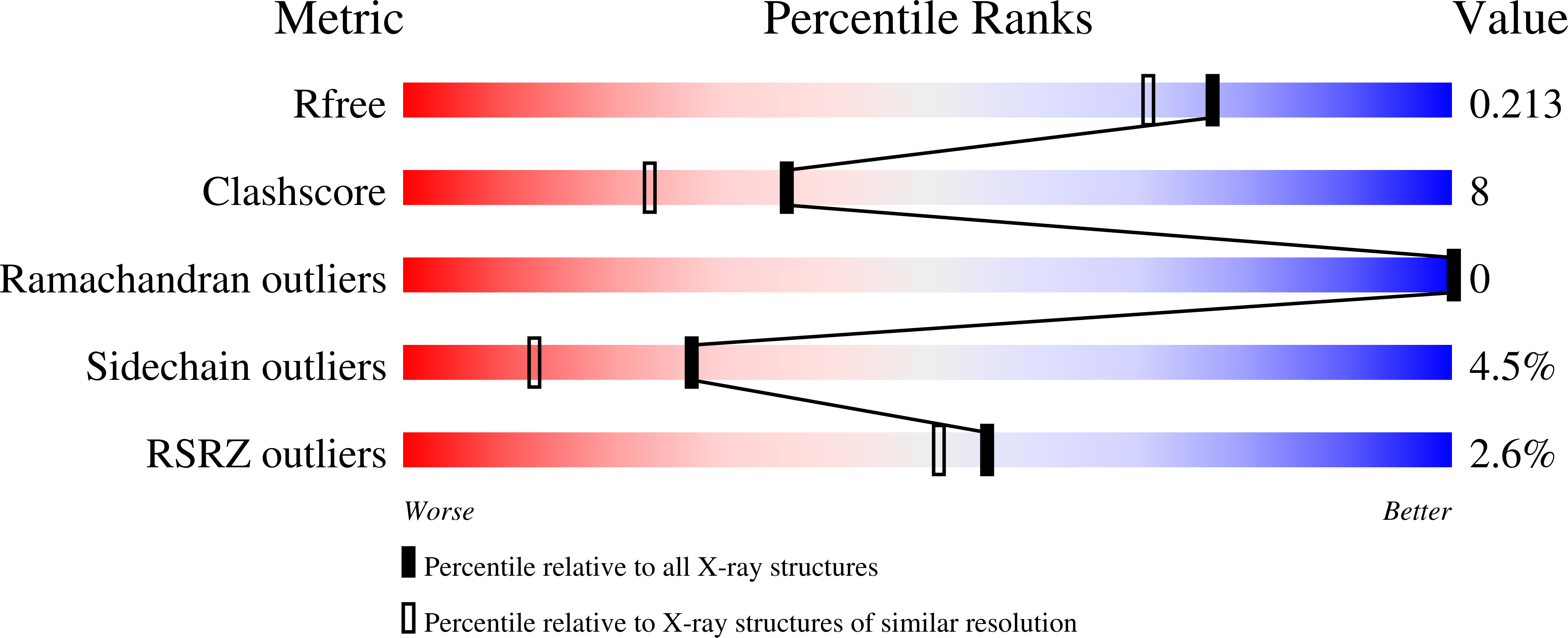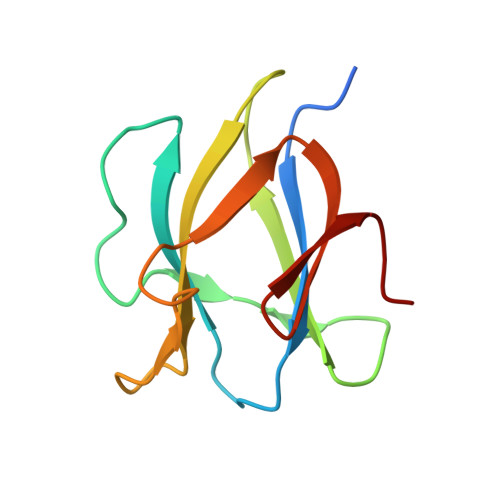A Structural and Functional Analysis of Alpha-Glucan Recognition by Family 25 and 26 Carbohydrate-Binding Modules Reveals a Conserved Mode of Starch Recognition
Boraston, A.B., Healey, M., Klassen, J., Ficko-Blean, E., Lammerts Van Bueren, A., Law, V.(2006) J Biological Chem 281: 587
- PubMed: 16230347
- DOI: https://doi.org/10.1074/jbc.M509958200
- Primary Citation of Related Structures:
2C3G, 2C3H, 2C3V, 2C3W, 2C3X - PubMed Abstract:
Starch-hydrolyzing enzymes lacking alpha-glucan-specific carbohydrate-binding modules (CBMs) typically have lowered activity on granular starch relative to their counterparts with CBMs. Thus, consideration of starch recognition by CBMs is a key factor in understanding granular starch hydrolysis. To this end, we have dissected the modular structure of the maltohexaose-forming amylase from Bacillus halodurans (C-125). This five-module protein comprises an N-terminal family 13 catalytic module followed in order by two modules of unknown function, a family 26 CBM (BhCBM26), and a family 25 CBM (BhCBM25). Here we present a comprehensive structure-function analysis of starch and alpha-glucooligosaccharide recognition by BhCBM25 and BhCBM26 using UV methods, isothermal titration calorimetry, and x-ray crystallography. The results reveal that the two CBMs bind alpha-glucooligosaccharides, particularly those containing alpha-1,6 linkages, with different affinities but have similar abilities to bind granular starch. Notably, these CBMs appear to recognize the same binding sites in granular starch. The enhanced affinity of the tandem CBMs for granular starch is suggested to be the main biological advantage for this enzyme to contain two CBMs. Structural studies of the native and ligand-bound forms of BhCBM25 and BhCBM26 show a structurally conserved mode of ligand recognition but through non-sequence-conserved residues. Comparison of these CBM structures with other starch-specific CBM structures reveals a generally conserved mode of starch recognition.
Organizational Affiliation:
Biochemistry and Microbiology, University of Victoria, Victoria, British Columbia V8W 3P6, Canada. boraston@uvic.ca


























